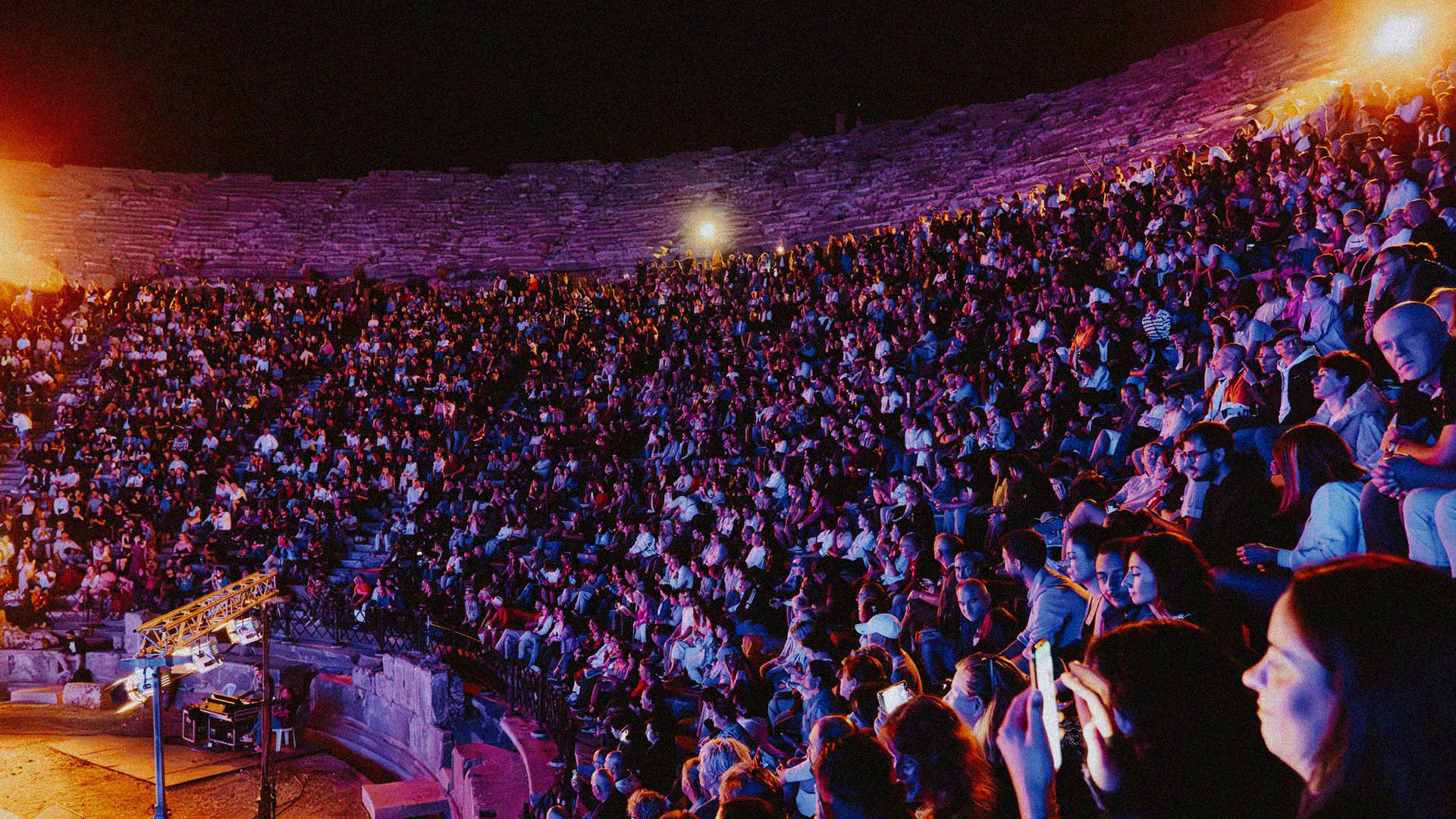How resistance to a government-funded festival is energising Turkey’s art scene
On a scorching day this August, Turkey’s Minister of Culture and Tourism, Mehmet Nuri Ersoy, took to the podium in Bodrum, a resort destination popular with British tourists. He was also standing where Kissebükü (Anastasiapolis), an early Byzantine settlement located between the port cities of Caria, Keramus and Halicarnassus, once stood. He praised the various excavations ongoing at the site since 2019, which has unearthed churches, baths, residences, a baptistery, trade centres, port structures and monumental tombs. The Culture and Tourism Ministry allocated ₺800 million to the excavation, due to conclude in 2028. “I hope that the results we’ll obtain, the works we’ll unearth, and the structures we’ll revive will benefit our country’s cultural and tourism life,” the minister said (all translations mine).
Yet he didn’t mention his plans, over the same period, to build a hotel on the nearby Adalıyalı coast. In 2020, Ersoy applied for a permit to create a new 124,000sqm branch of Maxx Royal, the lucrative five-star hotel chain he owns. Despite objections by local organisations, the plans to build were approved this August by the Ministry of Environment, shortly before the Kissebükü event. The project area has long been designated by the government as a third-degree ‘Sit’ (the Turkish term for an archaeological site), granting it certain developmental and conservational protections. Maxx Royal’s green-lighted project file didn’t specify how many trees would be razed for the new resort. “The promotional event for the archaeological site in August conveniently concealed the hotel project,” says Mustafa Gündoğ, a veteran local journalist from Bodrum who is among the project’s critics. “When the excavations began there in 2019, the hotel management claimed their place had nothing to do with their project in Adalıyalı, and that Kissebükü and Adalıyalı are different places. They’re not. They’re situated in the same area, one and a half kilometres apart.”
The Bodrum saga exemplifies the Culture and Tourism Ministry’s savvy – and its taste for simultaneous extraction of and insertion in Turkish culture to its own aims. But it is the Culture Route Festival, another ministry brainchild, that has forced a lasting political rift in Istanbul’s contemporary art scene. In 2021, the ministry launched the event in Istanbul’s historic heart, Beyoğlu, celebrating the government’s vision for the neighbourhood. (After its inception in Istanbul, the annual festival added four cities in 2022 and six more in 2023.) The 2021 edition’s timing coincided with the twin openings of the AKM Cultural Centre in Taksim, comprising a concert hall, theatre and cultural centre, and Galataport waterfront project, located along a 1.2km coastline on the Bosphorus. Galataport features 230 food and retail stores and is home to the new Renzo Piano-designed building of Istanbul Modern, Turkey’s first contemporary art museum which opened in 2023. It was all, it seemed, an orchestrated pronouncement of the city’s cultural prowess.
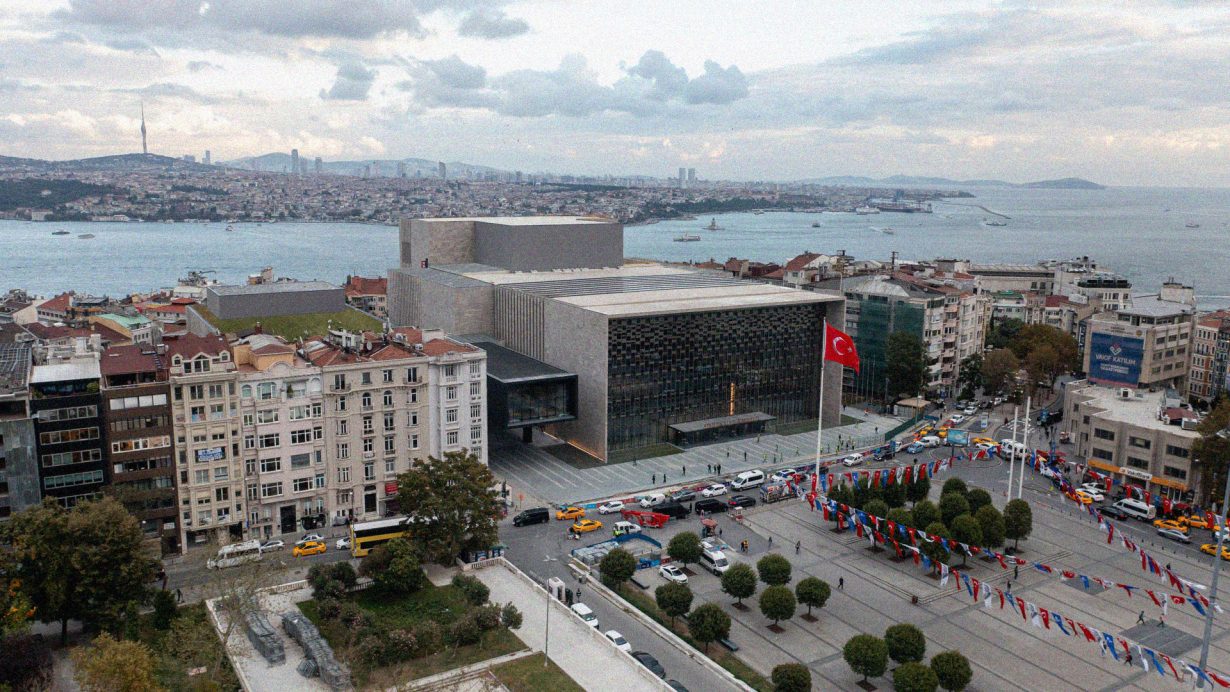
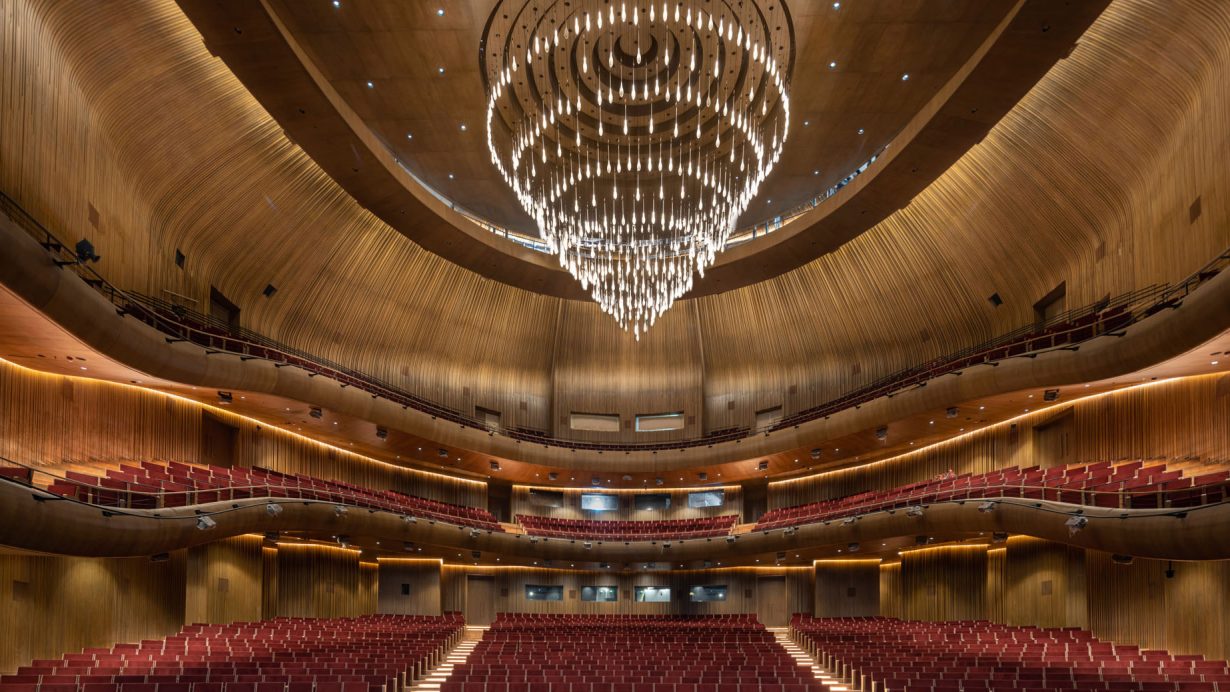
In its first iteration, the Culture Route displayed works by a handful of well-known contemporary artists from Istanbul: Ali Akay, a professor and head of the sociology department at Istanbul’s Mimar Sinan Fine Arts University, helmed the festival’s curating duties. At the heart of Culture Route was the new AKM Cultural Centre, a towering, state-of-the-art venue with two concert halls and multiple gallery spaces upstairs, overlooking Taksim Square. Turkey’s president Recep Tayyip Erdoğan said at the festival’s opening ceremony on 29 October 2021: “this work is where the differences between the old Turkey and the new are most clearly seen.” From a giant screen placed outside AKM, I watched as Erdoğan scolded artists who “opposed the AKM renovation project for many years and resorted to unimaginable lies and slander for this purpose and will feel a little embarrassed in the face of the work that has emerged.”
Many of Istanbul’s leading art institutions took part in Culture Route’s first edition, from SALT Beyoğlu and Aksanat to Pera Museum. The Ministry seemed to appropriate the concept of a ‘culture route’ in Istanbul from Tophane Art Walk, launched in 2012 amid Istanbul’s art boom. (Most of the galleries of Tophane Art Walk no longer exist, partly because of the government’s gentrifying redevelopment of the neighbourhoods it featured.) Meanwhile, a section of Culture Route was titled ‘Pedestrian Exhibitions’, taking its title from an exhibition that ran from 2002 and 2005, co-curated by Emre Baykal and Fulya Erdemci, and showed works in public squares and art spaces in Tünel, Karaköy and Nişantaşı.
Numerous artists, whose exhibition posters for independent shows taking place at venues around Istanbul were adorned with the Culture Route logo in 2021, have said they didn’t even know they were taking part. Video and installation artist Zeyno Pekünlü recalls her surprise at discovering her involvement. “Most people weren’t aware, but anyone with an exhibition open at the time of the Culture Route was automatically added to the festival. Nobody asked them if they were okay with it.” After talking to friends working in different galleries, Pekünlü learned that the government had offered galleries customs duty reductions on the import and export of artworks and related materials. “The government was verbally attacking us during the opening ceremony, but also, somehow, making us part of Culture Route. How did that work?”
Soon after the lavish launch gala, Culture Route faced accusations of artwashing. Critics charged the event with concealing the government’s gentrification of the area between Gezi Park and Galataport. “That route represents an attack on the city’s cultural legacy and reminds us of the struggle to preserve it,” says the artist and activist Nâzım Richard Dikbaş, who wrote an influential article in 2021 about AKM and the Culture Route. “Had we not succeeded in defending the Gezi Park during 2013’s protests, the final destination of Culture Route would be the shopping mall the government planned to build there.” Dikbaş added that the project intended to hit multiple birds with one stone: “legitimising censorship, causing indefinite damage to cultural heritage, and preventing the asking of legitimate questions about cultural policies.” The overall message seemed to be that artists could have it both ways: work via government resources and retain their freedom. Yet this logic played into the government’s hands by mirroring its neoliberal politics: citizens can insouciantly devote their lives to profit and ignore ethical consequences. Among the works featured in Culture Route were public interventions installed at Gezi Park, the site of conflict between environmentalist activists and the Turkish government who wanted to build a shopping mall there in 2013. “This project is successful in terms of the government’s image,” said the art historian Osman Erden on social media, expressing his surprise at participating artists and institutions. “Those who planned it,” he added ironically, “should be congratulated.”
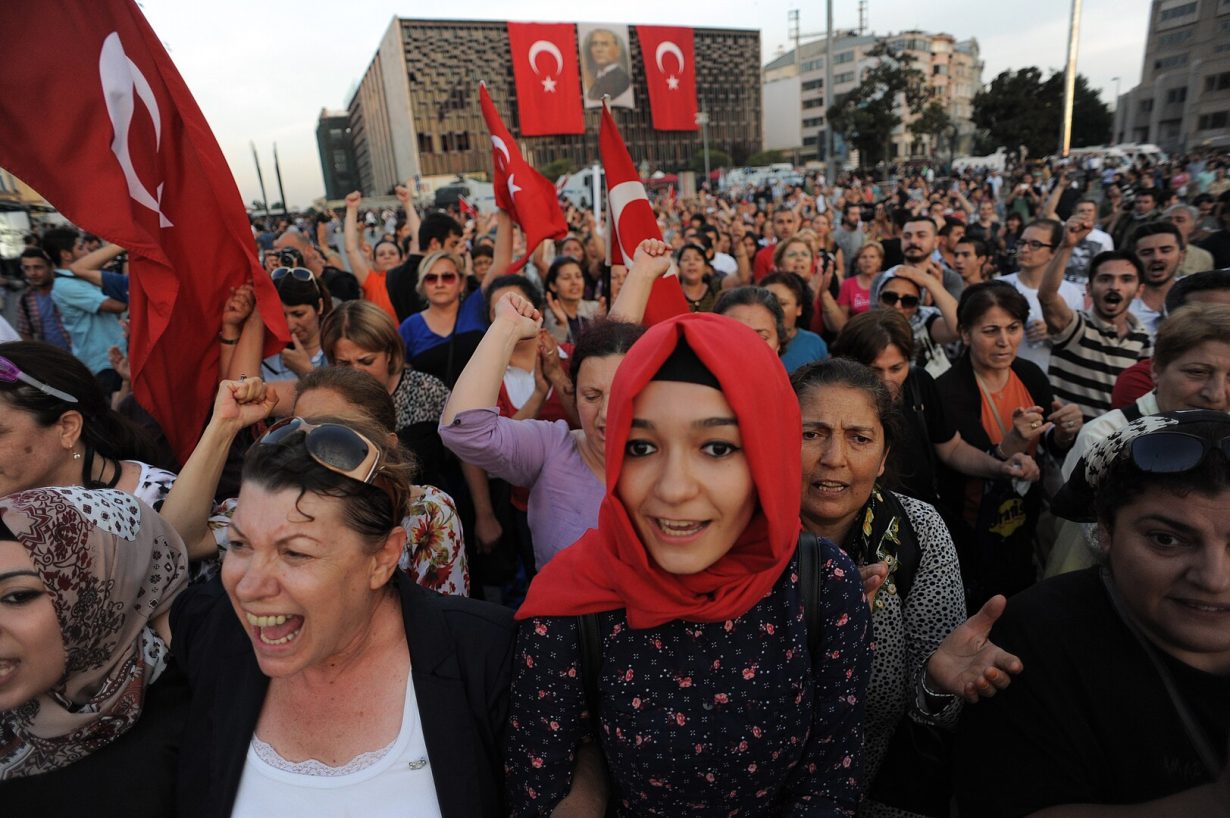
The debate that met the Culture Route’s launch has energised Turkey’s art scene. “Installing two artworks at Gezi Park in a municipality-supported project. Are you fucking kidding me?” curator and activist Asena Hayal asked candidly in a social media post. Pekünlü used the word “appropriation” to explain the Culture Route’s main strategy. “They initially approached many people through a PR firm, which hid the presence of the Culture Ministry and the Beyoğlu Municipality. That company approached the curators, and the curators reached the artists. This chain of confidence turned into a trap for those who didn’t look that much into it.” She said the government also profited from the art institutions’ “inability to say no”. Dikbaş called AKM, Narmanlı Han, Cercle d’Orient, and other stops of the Culture Route “zombie projects”, and wondered why people kept calling those buildings by their former names when the original buildings were torn down to make replicas as part of the government’s gentrification project in the neighbourhood. He said kahır (“devastation”) is the Turkish word that best describes his feelings about artists and curators participating in the Culture Route.
Since the initial response, Pekünlü noted, many have changed their perspective. In June 2022, weeks after Culture Route’s second edition launched, the artist Marina Papazyan and the researcher Eda Hisarlıoğlu published an article, ‘Beyoğlu’s new perpetrators’. They described an ethos of “the new normal” in Istanbul, which invited artists to accept the status quo by ignoring the consequences of contributing to government-funded art events, forcing on them a feeling of helplessness. Seeing other artists contribute to Culture Route, they feared others would decide that they might too. Institutions, meanwhile, legitimised their participation with the argument that they were “making young artists visible”.
In 2022 Culture Route featured BASESELECTED, which brought together 100 works by 70 artists who took part in BASE, an annual exhibition for new graduates of fine arts faculties of Turkish colleges since 2017. Curated by Derya Yücel, the show took place at the Cercle d’Orient gallery of Grand Pera, a shopping mall. The gallery space has been built on the former site of the Emek Theatre, whose destruction in May 2013 ignited the Occupy Gezi events. After the reignited public debate about BASELECTED’s venue, an artist pulled out from the event. “Why did just one artist pull out?” asked Papazyan and Hisarlıoğlu at the time. “This wasn’t because other contributors were not sensitive but because the political acts of pulling out, exposition and boycott have been discredited, and the fear of being forgotten, and committing a ‘career suicide’ with such acts became widespread.”
The descent from there was steep. By 2023, Culture Route had lost most of its local collaborators. That edition’s main offering was ‘the most extensive exhibition about Star Wars ever to be held’ in Istanbul’s Cinema Museum, featuring ‘a collection of 600 pieces of art amassed over 40 years, including originals, lifesized figures, helmets, light sabres, signed masks’ and other gizmos. This edition also displayed Refik Anadol’s immersive AI installation, Renaissance Dreams (2022), a commission by Palazzo Strozzi. The work’s dataset included images of artistic and literary works produced between the fourteenth and seventeenth centuries to create ‘renaissance dreams’ in the mind of a machine. (In 2023, Anadol received a Presidential Culture and Arts Grand Award in the field of ‘digital arts’ from Erdoğan, who praised the artist for his success at “telling our generation about the future”. The artist sent his mother to receive it.)
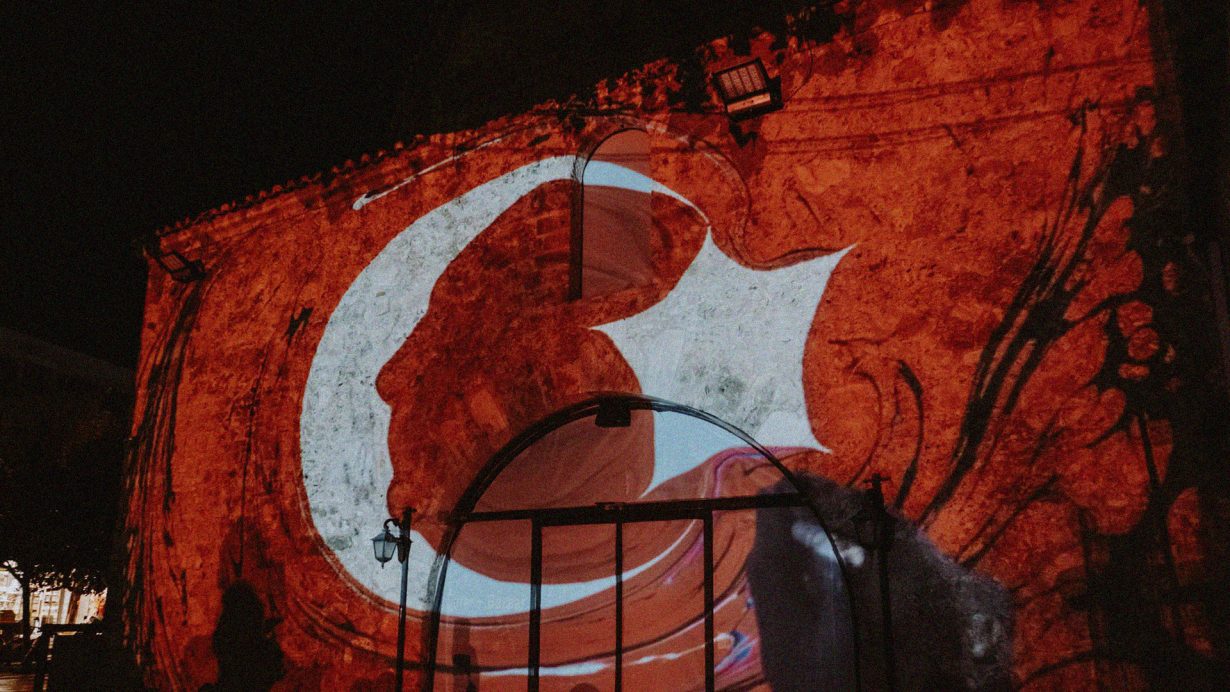
This year’s edition, which opened last month and continues to 31 December, has again changed dramatically. After Turkey’s governing party, the AKP, lost the municipality of Beyoğlu in this year’s local elections, the Culture Route in Beyoğlu became a thing of the past. Now rebranded ‘Istanbul Culture Route’, this year’s program features a ticketed exhibition, Pablo Picasso: A Journey from Painting to Ceramics, including Picasso’s original engravings, drawings, posters, lithographs and photographs, and another titled Warhol’s World: The Icon of Pop Art – both at AKM. Speaking with Culture Route staff, I learned that the festival no longer has a selection committee and operates on an invitation basis. Around 70 people are employed by AKM for the festival to manage the relationship between AKM and the Culture and Tourism Ministry. They aren’t civil servants but contracted employees. This, after all, is the government’s broader neoliberal tactic: allocating public funds for its purposes while dismantling the possibility of public debate and public art; privatisation, outsourcing and subcontracting.
If Dikbaş’s worst fear for Culture Route’s first edition was the prospect of the younger generation of artists asking the question “if these artists are collaborating, why shouldn’t I?”, then Pekünlü said she was happy that, for this year’s Culture Route program, “organisers shifted their focus to mainstream shows and stopped chasing us.” In other words, the lack of local collaboration is good news, a sweet triumph for those who resisted the financial allure of the festival in the past. While reporting for this piece I could see a shared sense that the reaction of the artworld over the past years had caused this retreat by the government: the art community had spoken by organising through social media and WhatsApp group texts, and simply learned to say ‘no’.
When I spoke to Papazyan recently, they issued a note of caution. “The ministry’s Culture Route had originally set out to influence a much larger area than the district of Beyoğlu, or the city of Istanbul,” they said. “I’m afraid we run the risk of undermining the ongoing success of the larger political and economic project behind the Culture Routes Festivals by prematurely declaring that its Istanbul branch has seemingly ‘failed.’” While glad to see lack of local actors in this year’s edition, Papazyan fears missing the big picture: an event that started in Beyoğlu has now become a national brand, with various iterations around the country. The Culture Ministry said it aims to have Culture Route festivals in 35 cities by 2028.
Still, there is hope in seeing so many components of Istanbul’s artworld taking positions following the publication of these critical articles. Pekünlü explained this with the “intergenerational transmission” of a culture of criticism. (Papazyan and Hisarlıoğlu, both born in 1996, though belonging to a different generation to Pekünlü’s,nevertheless share her concern with the social, economic and environmental damage caused by rapid government-sanctioned urban redevelopment in Istanbul.) Institutional critique is a central concern for Turkey’s Generation Z and I’ve observed their spirit of resistance while reporting the ‘From Here to Where’ forums for ArtReview that began in January this year where hundreds pondered the ethics and politics of Istanbul’s art world. Nine other forums followed in different cities in Turkey in 2024, where thousands of art workers, mostly in their twenties, discussed issues including mobbing and exploitation in art spaces as well government intervention and censorship. Last week, the group launched a ‘Common Culture’ campaign that seeks to ‘reconsider the ongoing network of relations and structural problems in the Turkish cultural scene and propose a new framework for an organised, common, transparent, fair and participatory environment for culture and arts’.
Asked about the 2024 program of the festival, Pekünlü said she was glad not to see “artists from our circles directly or indirectly linked to Culture Route anymore.” As for the Culture Route organisers, “they seemed to have turned instead toward dead white men like Picasso and Warhol.”
Kaya Genç is a journalist and novelist from Istanbul, whose most recent book is The Lion and the Nightingale: A Journey Through Modern Turkey, republished with new material this year.
